Given a character vector
chars <- c("cannon", "jackson", "benford", "paws", "moxie")
the task is to find the number of characters of each of elements of chars. Then we want to take this result and subset letters accordingly.
1st approach: copy&paste (don't do that)
nchar_cannon <- nchar(chars[1])
nchar_jackson <- nchar(chars[2])
nchar_benford <- nchar(chars[3])
nchar_paws <- nchar(chars[4])
nchar_moxie <- nchar(chars[5])
letter_cannon <- letters[nchar_cannon]
letter_jackson <- letters[nchar_jackson]
letter_benford <- letters[nchar_benford]
letter_paws <- letters[nchar_paws]
letter_moxie <- letters[nchar_moxie]
out <- c(letter_cannon,
letter_jackson,
letter_benford,
letter_paws,
letter_moxie)
setNames(out, chars)
I guess this is what you are trying to avoid using a ...
2nd approach: for-loop (is fine, though does not enjoy the best reputation in the R community)
out <- c()
for( position in c("cannon","jackson","benford","paws","moxie") ) {
n <- nchar(position)
out[position] <- letters[n]
}
out
3rd approach: use a functional
sapply(chars, function(x) letters[nchar(x)])
4th approach: vectorization (recommended)
setNames(letters[nchar(chars)], chars)
benchmark
library(microbenchmark)
chars_long <- c(replicate(1e6, chars))
benchmark <- microbenchmark(
loop_fun = loop_fun(chars_long),
functional_fun = functional_fun(chars_long),
vectorize_fun = vectorize_fun(chars_long),
times = 100L
)
autoplot(benchmark)

#Unit: seconds
# expr min lq mean median uq max neval
# loop_fun 7.217346 8.142811 9.481697 9.431999 10.472183 13.54128 100
# functional_fun 10.540376 12.064269 13.062617 12.873895 13.738929 17.90349 100
# vectorize_fun 1.227648 1.310427 1.450161 1.370944 1.552207 2.00134 100
Functions used in the benchmark
loop_fun <- function(x) {
out <- c()
for( position in x ) {
n <- nchar(position)
out[position] <- letters[n]
}
out
}
functional_fun <- function(x) {
sapply(x, function(y) letters[nchar(y)])
}
vectorize_fun <- function(x) {
setNames(letters[nchar(x)], x)
}
